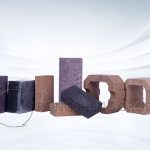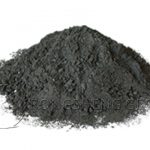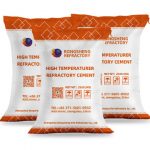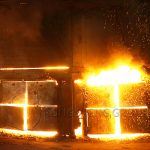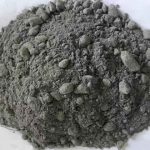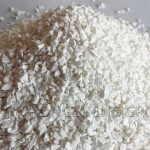Refractories are originally defined as an inorganic non-metallic material with a refractoriness of not less than 1580°C. Refractoriness refers to the temperature in degrees Celsius of a refractory cone sample that resists high temperature without softening under no load. Quick Understanding of Refractory Materials. It is now defined as any material whose physical and chemical properties allow it to be used in high-temperature environments called refractory materials. Widely used in metallurgy, chemical industry, petroleum, and other industrial fields.
Quick Understanding of Refractory Materials
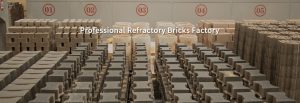
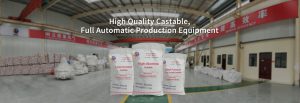
Classification of Refractories
According to the high and low score of fire resistance:
- Ordinary refractories: 1580℃~1770℃
- Advanced refractories: 1770℃~2000℃
- Special grade refractories: >2000℃
Refractories can be divided into: Fired products, non-fired products, unshaped refractories.
According to the chemical properties of materials: Acid refractories, neutral refractories, alkaline refractories.
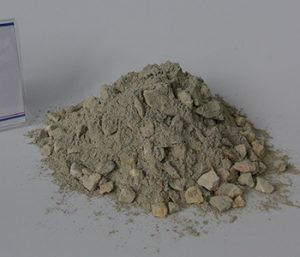
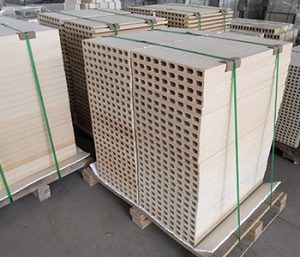
Classification by chemical composition:
①Silica refractories (mainly composed of silica)
②Alumina silicate refractories (also known as aluminosilicate refractories)
③Magnesia refractories (magnesia products with magnesia oxide greater than 80%)
④Magnesia spinel refractories (magnesia and spinel products with a magnesia and magnesia content greater than or equal to 20%)
⑤ Magnesia-chrome refractories (mainly products made of magnesia and chromite)
⑥Magnesia dolomite refractories (made of magnesia and dolomite clinker)
⑦Dolomite refractories (using dolomite clinker as the main raw material)
⑧ Carbon composite refractories (called carbon-containing refractories, composite materials composed of oxides, non-oxides, and carbon materials such as graphite)
Various Refractory Materials For Sale Cheap From RS Factory! Click For Price!
Refractory Chemical Composition
The chemical composition of refractory materials is its basic characteristic. Can a refractory material form a certain phase under certain conditions? Why is there such a phase? What are the specific properties? And how to essentially change some specific properties of a material depends on its chemical composition.
The main chemical component of refractory materials
The main components in refractory materials refer to the chemical components that make up the vast majority and play a decisive role in the high-temperature properties of the material. The reason why refractory materials have excellent resistance to high temperature, and many refractory materials have their own characteristics, completely or basically depends on the main component.
It is widely distributed in the earth’s crust, and the main component of refractory materials is oxides. In addition, some carbides, nitrides, silicides, and borides can also be used as the main components of refractory materials. At present, the main components of refractory materials that are widely produced and used are mainly Al2O3, BeO, Cr2O3, MgO, CaO, SiO2, ThO2, UO2, ZrO2, and other oxides, SiC, WC, B4C, and other carbides, and Si3N4 and other nitrides.
Various Refractory Materials For Sale Cheap From RS Factory! Click For Price!
Impurities of refractory materials
Impurity refers to a chemical composition that is different from the main component in the refractory material and has a small content, but the high-temperature resistance of the refractory material often causes harm. This kind of chemical composition is mostly entrained in the raw material containing the main component.
As for the material whose main component is SiO2, if it contains any oxide of Na2O, Al2O3, TiO2, CaO and FeO. In addition to the lower melting point of Na2O, other oxides have a higher melting point, but coexist with SiO2, but have a fluxing effect. Therefore, to improve the performance of refractory materials against high temperatures, the content of impurities must be strictly controlled.
Additional ingredients of refractories
Extra ingredients are often called admixtures and are small amounts of ingredients added for specific purposes in the production of refractory products. For example, in order to promote the formation and transformation of certain phases in the material, the mineralizer is added. In order to inhibit the formation of certain phases in the material, inhibitors or stabilizers are added. In order to promote the sintering of materials, fluxes, and so on are added.
In short, in the production of refractory materials, the addition of a small number of additives can change the composition and structure of the material to a certain extent. Therefore, it is convenient to produce and obtain certain expected characteristics of the product.

Rongsheng Refractory Materials Manufacturer
Rongsheng Refractories Manufacturer is a strong manufacturer and seller of refractories. Rongsheng’s refractory materials have been sold to more than 60 countries around the world, such as Malaysia, South Africa, India, Indonesia, Pakistan, Netherlands, Kuwait, Kenya, Russia, United States, Philippines, Vietnam, etc. If you need to buy refractory products, please contact us. You can also submit a message form on the website page. Please elaborate on your needs.



